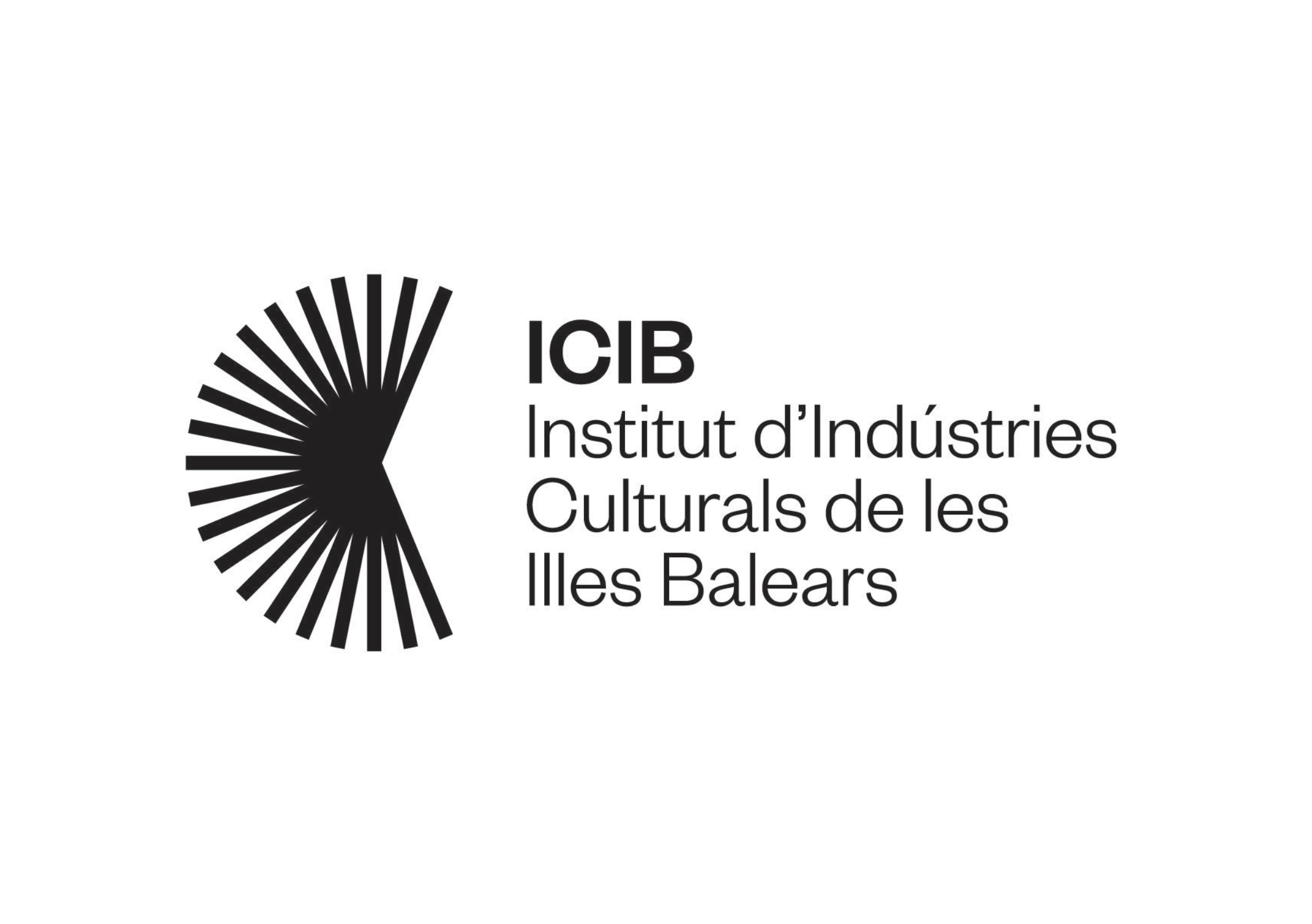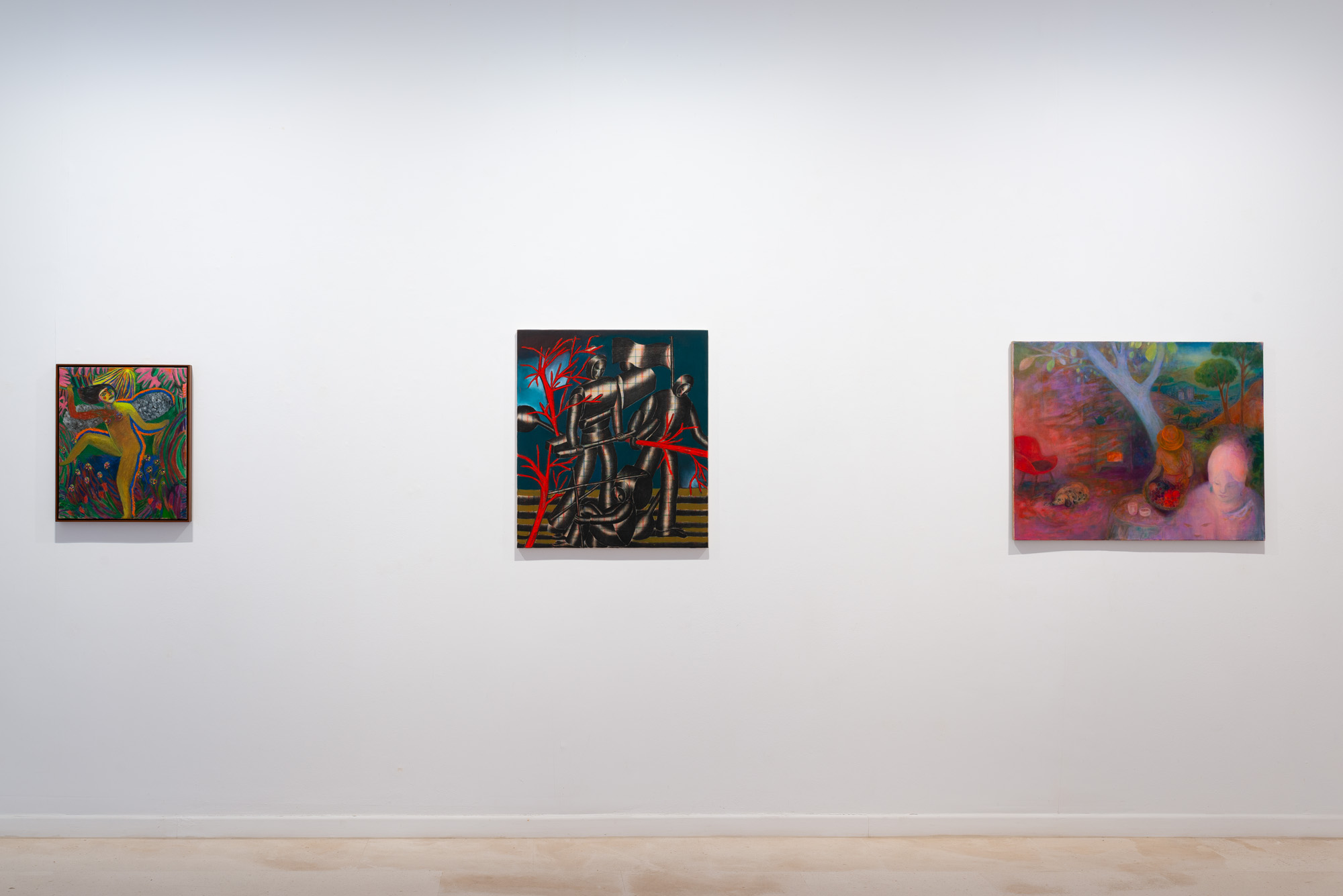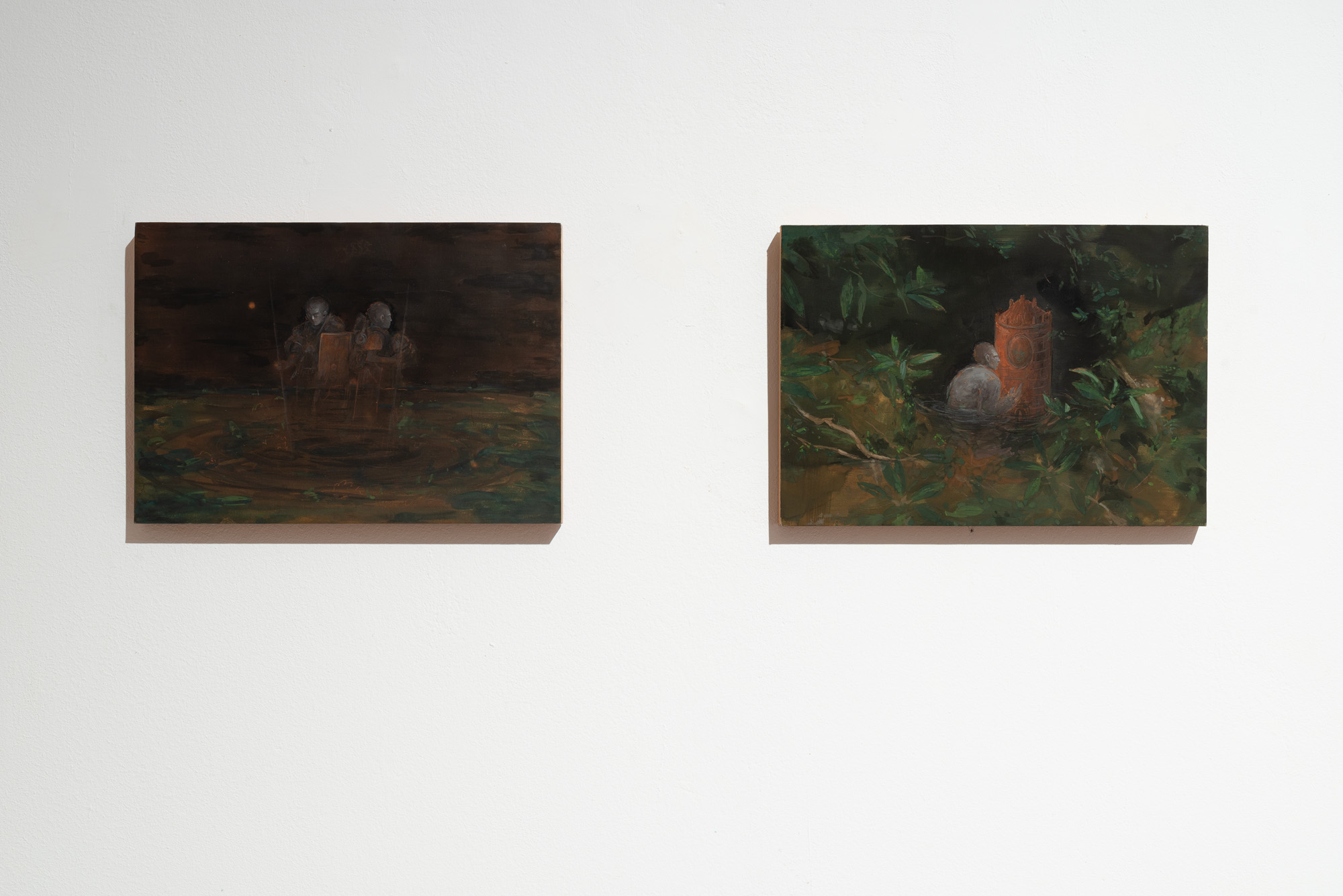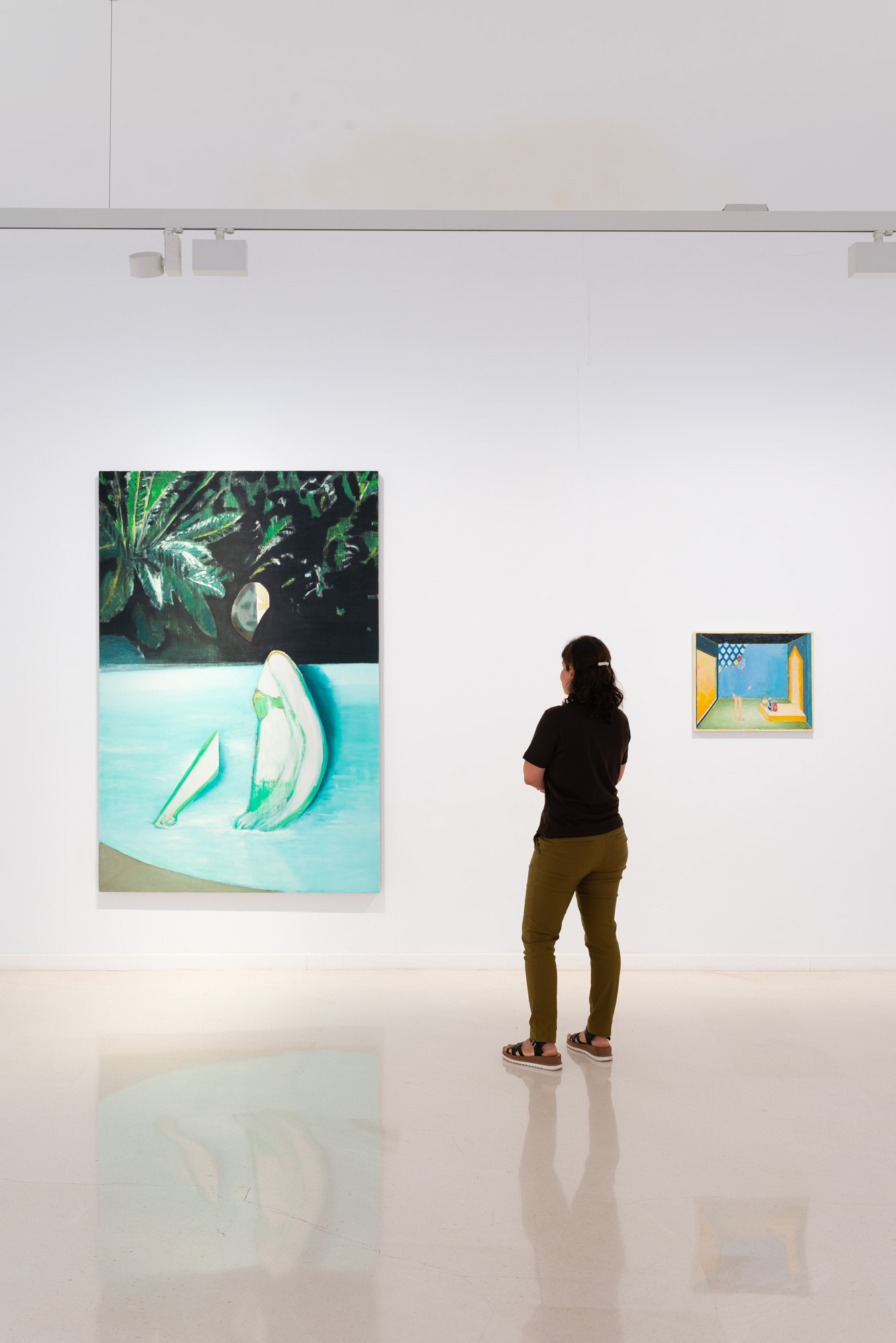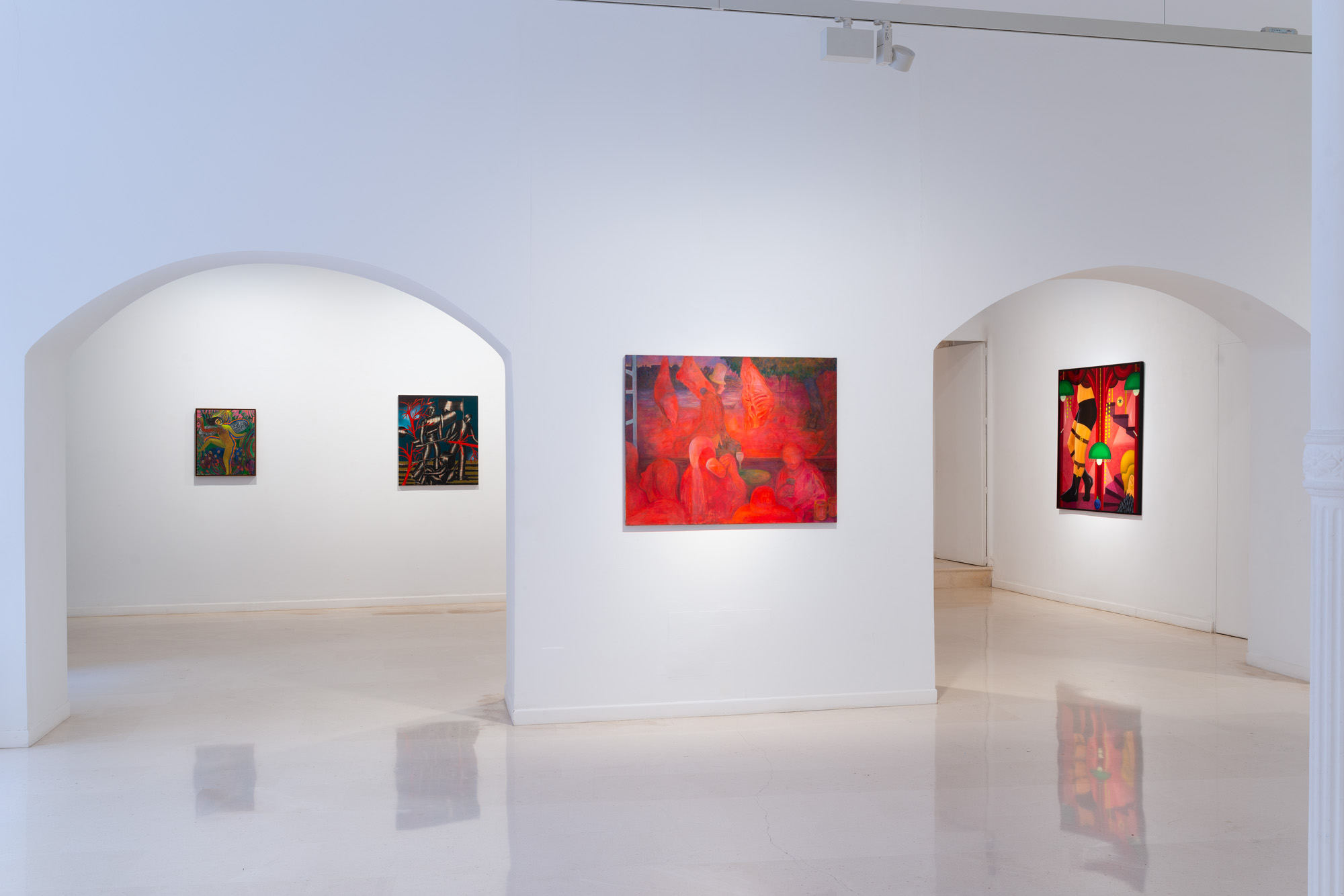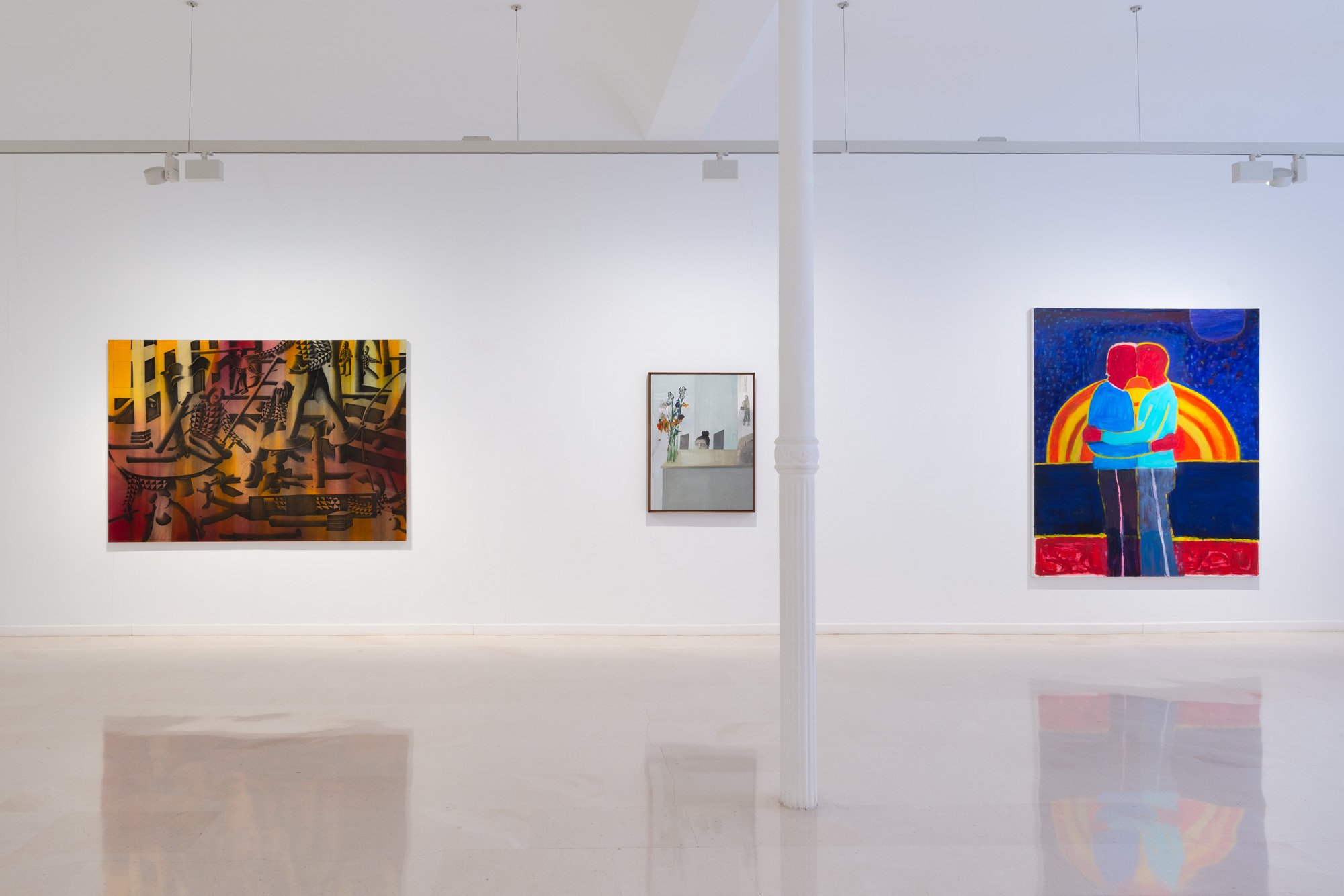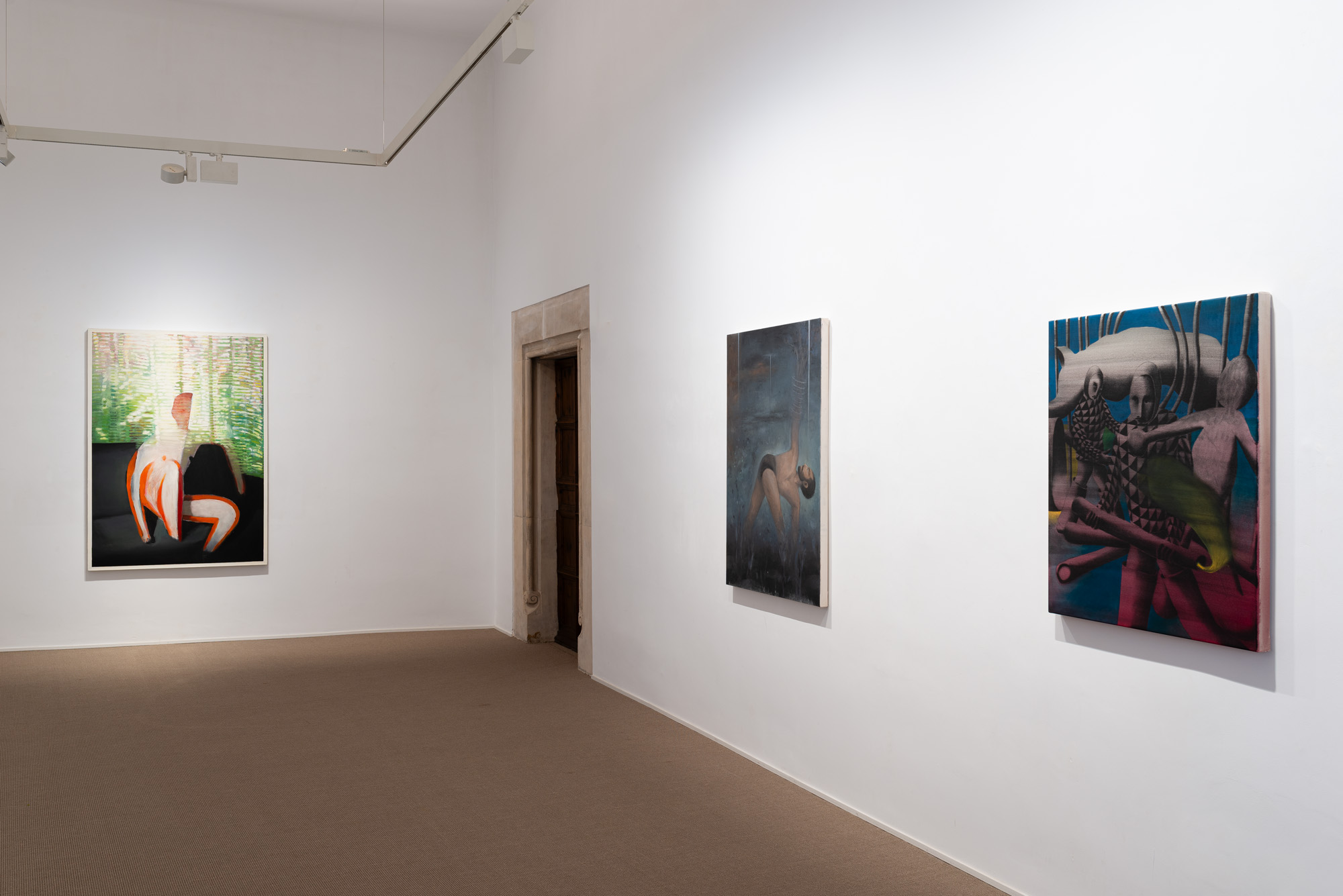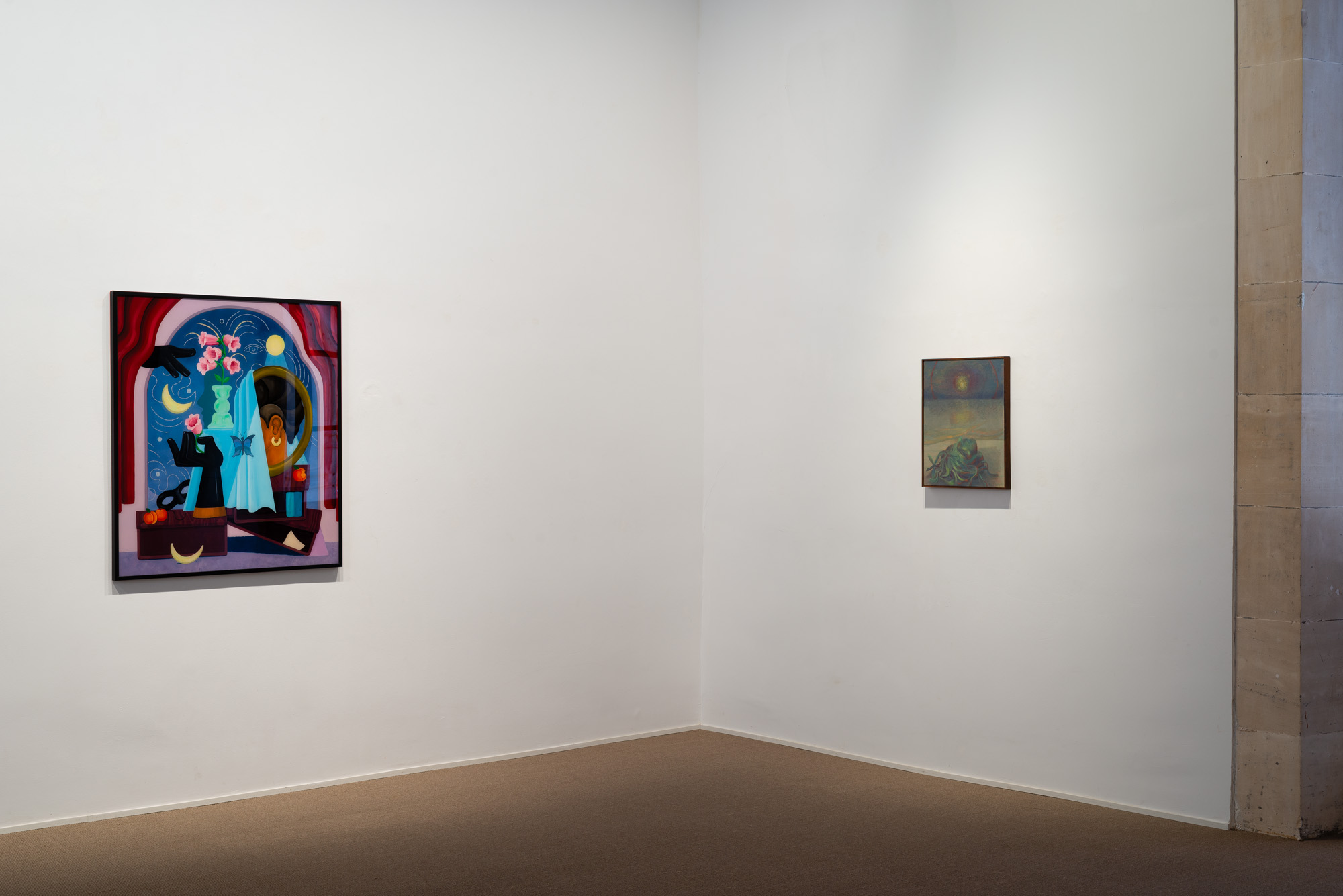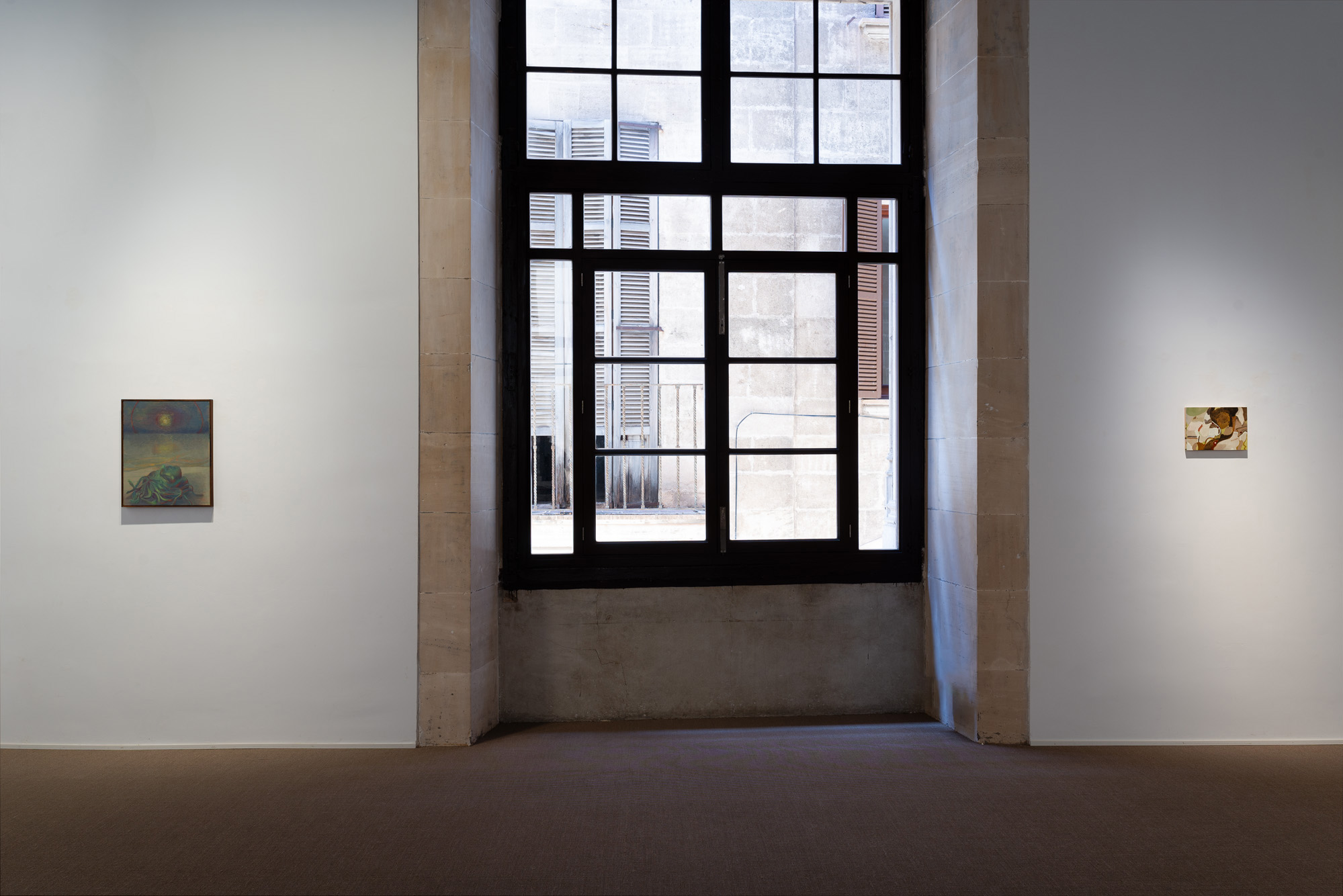
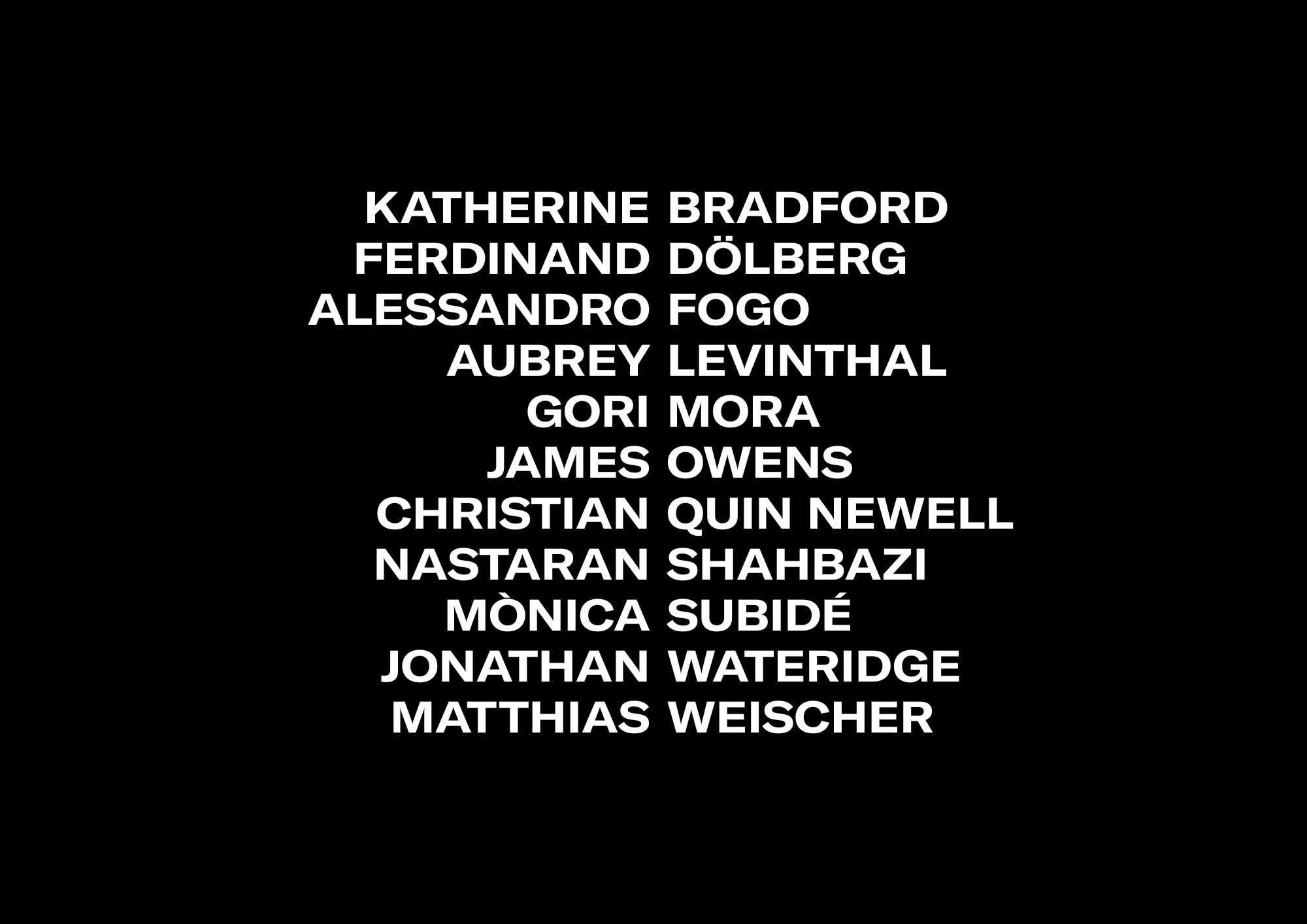
Opening: 20 de septiembre, 2025
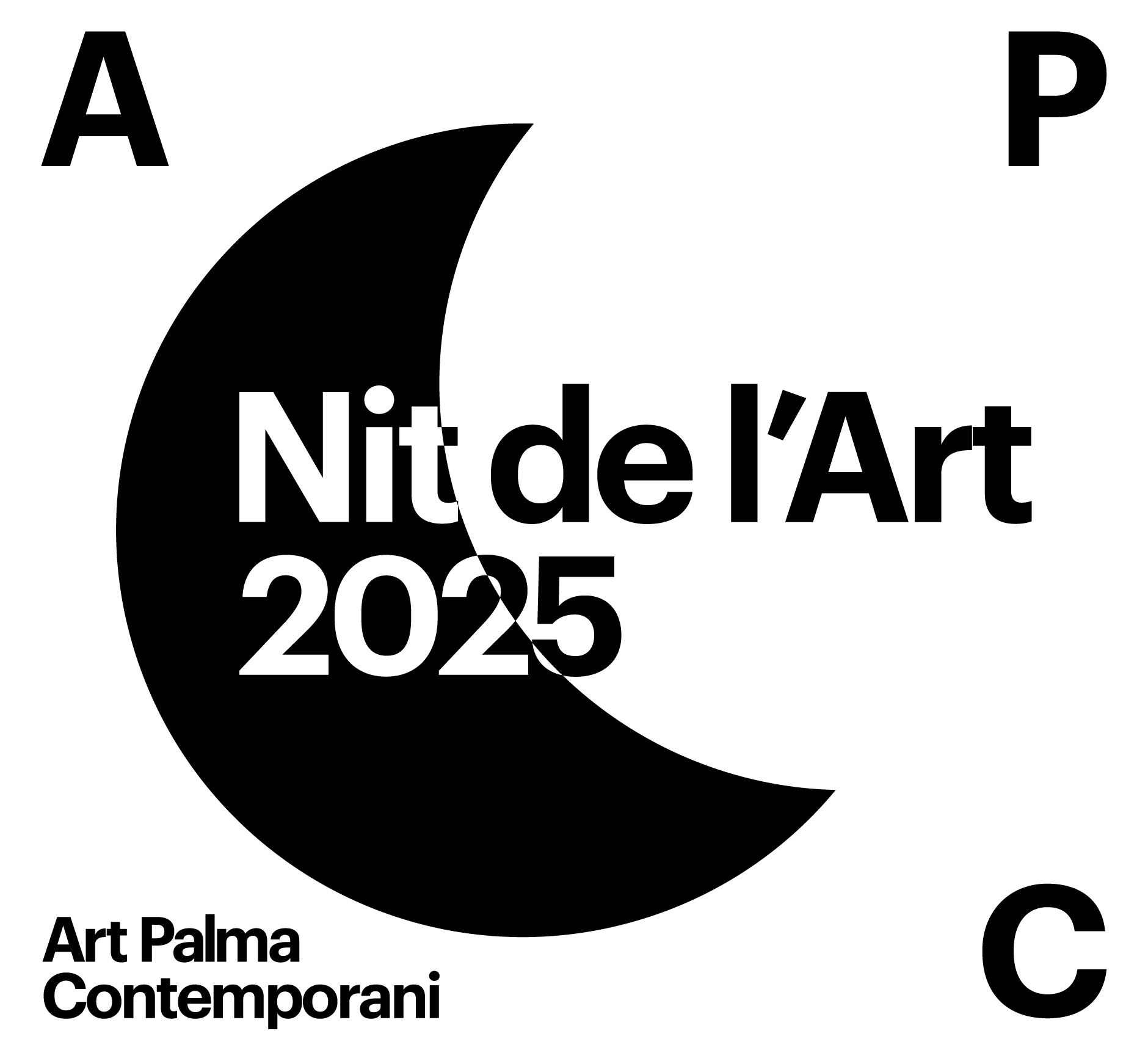
Words, images, or gestures change meaning according to the context. Since the dawn of mankind, humans have crafted fables, myths, and stories to explain, scare, console, or inspire. Through these efforts, various occurrences, beings, or events earned new connotations, often becoming symbols. Yet, due to the said context (perhaps cultural or historical), these symbols can vary significantly.
Parsley, sage, rosemary, and thyme are common plants used as herbs. Mentioned together, they sound trivial and unremarkable. However, when included in a traditional English folk song, Scarborough Fair (best known by Simon & Garfunkel's arrangement from the 1960s), they earn symbolic meaning rooted in folklore, herbalism, and spiritual connotations. In such light, parsley, sage, rosemary, and thyme symbolize virtues essential for relationships: comfort, wisdom, remembrance, and courage, and as such, they help to weave timeless stories of love and longing.
This phenomenon has been widely used in various art forms to underline, downplay, or alternate particular meanings or entire narratives. In literature, events or places are described in a particular context, enabling the reader to visualize even the most impossible ones. As mentioned, in music, words or phrases earn a whole new meaning due to the atmosphere of the melody in which they're expressed. In painting, specific imagery can be depicted in an extraordinary surrounding or within a particular ambiance that shifts its initial or ingrained meaning. All this allows for familiar and fantastical stories to intertwine and exist, touching on different aspects of the person experiencing them.
The artists featured in this exhibition often embrace such methods as they conjure their visual narratives. Not shy of constructing entangled, strange, amusing, or dreamlike atmospheres outside regular logic circuits or folklore, the paintings are regularly grounded in notions of identity and personal history. Referring to anything from myths over popular culture symbols to communal activities, they build their narratives from the subtle relationships between their personal and collective experiences. From there, the particular traits of the subjects, the nuances of body language, and dialogue with either elaborately refined or semi-abstract backgrounds extend these ideas to broader social and cultural contexts. Employing the endless potency of painting to speak of the timeless intricacies of existence, challenge societal norms, or highlight the fleeting aspects of the human condition, the works reflect their experiences as humans and artists navigating everyday life.
Texto by Sasha Bogojev for the exhibition Parsley, Sage, Rosemary, and Thyme.
____
Katherine Bradford (New York, 1942), lives and works in Brooklyn, New York. Is an American painter whose practice, rooted in abstract expressionism and color-field painting, has evolved from shadowy abstraction to figurative imagery. Known for her recurring motifs of swimmers and superheroes, her works combine luminous color planes with cryptic figures, exploring themes of empowerment, gender, and the tension between individuality and community. Bradford's paintings create fantastical worlds that balance empathy and cohesion with isolation and loss.
Bradford had solo institutional exhibitions at Kunsthalle Emden, Germany; Halle für Kunst Steiermark, Austria; Hall Art Foundation, Vermont; Frye Art Museum, Seattle; Portland Museum of Art, Portland; The Modern Museum of Forth Worth, Forth Wort, TX, among others, and has been included in the following institutional group exhibitions (selection): Kunsthalle Nurnberg, Germany; RISD Museum, Brown University, Providence; Transcend Alabama Contemporary Art Center, Mobile, AL; Farnswort Art Museum, Rockland, ME; The Storefront, Bellport, NY; Havard University, Cambridge, MA; New Bedford Whaling Museum, New Bedford, MA; Bowdwoin College Museum of Art, Brunswick, ME, US; Colby College Museum of Art, Waterwille, Maine.
Public Collections (selection): Metropolitan Museum of Art, New York, NY; Brooklyn Museum, NY; Hirshhorn Museum, Washington D.C.; Smith College Museum, MA; Bowdoin College Museum, ME; Farnsworth Museum, ME; Pennsyvania Academy of Fine Arts, PA; Bates College Museum, MA; Addison Gallery of American Art, MA; Worcester Museum of Art, MA; Portland Museum, ME; Kunsthalle Emden, Germany.
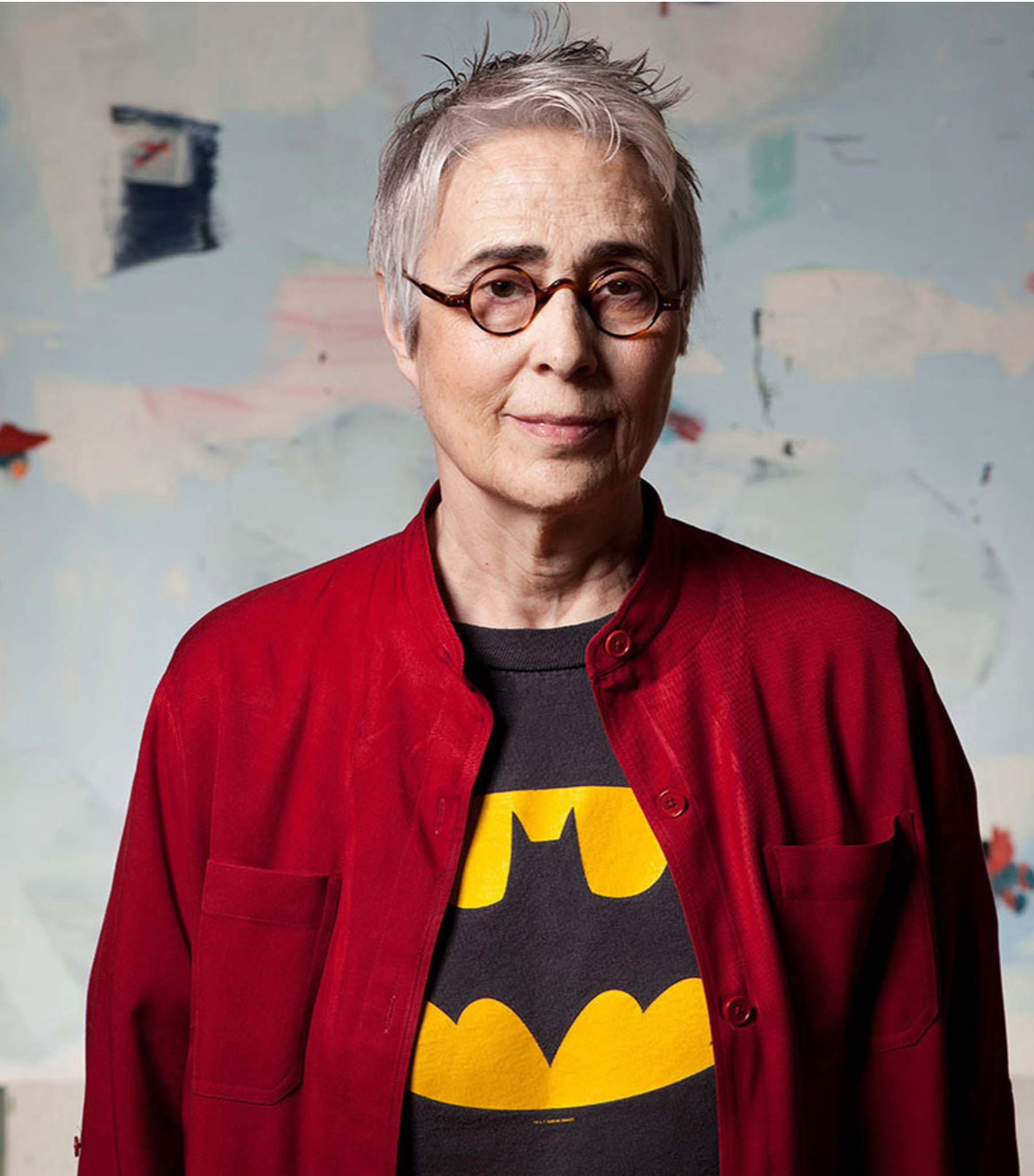
Portrait of Katherine Bradford, 2025. Courtesy of the artist and Haverkampf Leistenschneider, image by Greg Irikura.
____
Ferdinand Dölberg (Eisenach, 1998), lives and works beween Berlin and London. Ferdinand Dölberg studied Fine Arts at the Universität der Künste (UdK) in Berlin. His painterly practice explores his position within social structures, interpersonal relationships, and the constant questioning of individuality. His works feature fictional figures, mask-like faces, and absurd body forms intertwined with shifting gender identities, creating an unsettling and ambiguous imaginary. These elements serve as visual tools to reflect on the human, the performative, and the collective, placing his work in a contemporary dialogue between representation and the construction of identities.
His artistic language is inspired by the Dada spirit of the early 20th century, drawing on absurdity, experimentation, and symbolism as strategies of disruption and as a call for political and social change. Dölberg has participated in solo and group exhibitions in Germany, the United Kingdom, and the United States, and this is his first exhibition in Spain.
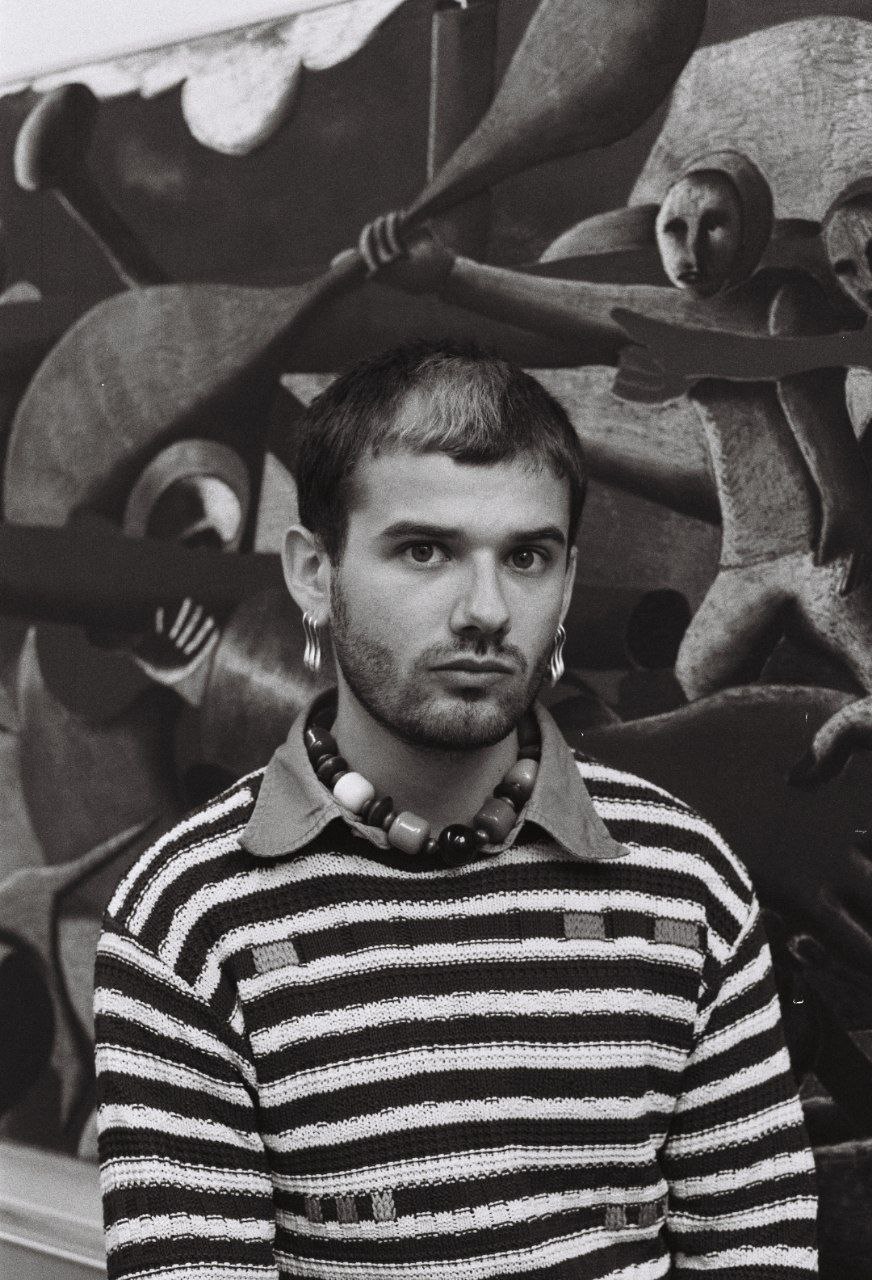
Portrait of Ferdinand Dölberg, 2025. Courtesy of the artist, image by Bahar Kaygusuz.
____
Alessandro Fogo (Thiene, Italia, 1992). Lives and works in San Benedetto del Tronto. In 2017 he obtained a Master in painting at the Royal Academy of Fine Arts Antwerp, Belgium, after graduating with a BA at IUAV Visual Arts in Venice.
Relevant international exhibitions include Attraverso i diluvi, Collezione Maramotti (Reggio Emilia, 2024); Distopica, Lyles & King gallery (New York, 2025); Reach out Touch faith, Fondazione Coppola (Vicenza, 2024); Hierophany, Vacancy Gallery (Shanghai, 2023); Mythos, Palazzo Buonaccorsi Museum (Macerata, 2023); Pittura Italiana Oggi, Triennale Milano Museum (Milano, 2023); 20 (What Now?), PM/AM Gallery (London, 2022); Paola Angelini & Alessandro Fogo. Black Morning, Lyles & King (New York, 2022); 07, PM/AM Gallery (London, 2021); Alla luce del sole, un attimo prima di spegnersi ,Annarumma Gallery (Naples, 2021); Domani Qui Oggi, Quadriennale di Roma, Palazzo delle Esposizioni (Rome, 2020); If on a winter's night a traveller , MAMOTH gallery (London, 2020); as well as his contribution to ImmersioneLibera, a project organized by Galleria Continua at Bagni Misteriosi (Milan, 2019).
In 2018, Fogo won the first painting prize at ArteLagunePrize in Venice.

Portrait of Alessandro Fogo, 2025. Image courtesy of the artist, image by Michele Alberto Sereni.
____
Aubrey Levinthal (Philadelphia, 1986). Lives and works in Philadelphia, Pennsylvania. Studied at the Pennsylvania Academy of Fine Arts, where she earned her MFA in 2008. Levinthal's work focuses on intimate scenes of everyday life, including self-portraits, depictions of friends, family, and fleeting neighborhood moments. Her paintings often convey a diffuse, slowed sense of time, using a palette of soft greens, yellows, ochres, pastels, and darker hues. With dislocated perspectives and an air of melancholy, her imagery reflects both beauty and disillusionment, addressing themes of solitude and emotional imbalance within the pressures of contemporary life and late capitalism.
Her work has been widely exhibited in the United States and abroad, including the ICA Boston (A Place for Me: Figurative Painting Now), the Flag Foundation in New York, Monya Rowe Gallery (NYC), M+B (Los Angeles), Grimm Gallery (London), Marlborough Gallery (London), Mathilde Le Coz (Paris), Stephen Friedman Gallery (London), Green Art Foundation (Dallas), Fleisher/Ollman Gallery (Philadelphia) and Haverkampf Leistenschneider(Berlin).
Public collections include The Institute of Contemporary Art (ICA), Boston; Flag Art Foundation, NYC; Reinhard Körner Foundation, Berlin; X Museum, Beijing, China and the Beth Rudin DeWoody Collection, West Palm Beach, Florida.
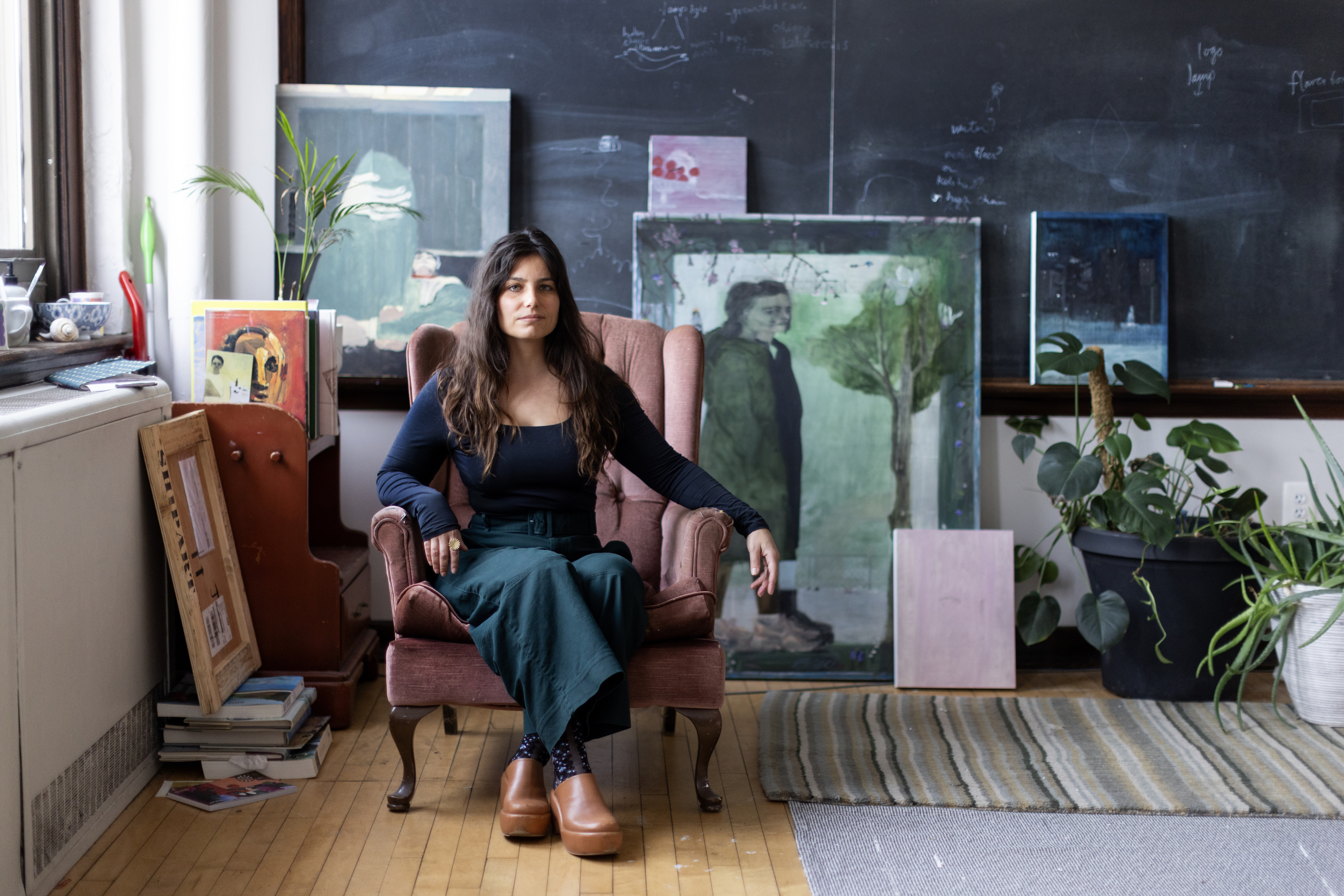
Portrait by Aubrey Levinthal, 2025. Courtesy of the artist and Haverkampf Leistenschneider, image by Courtney Apple.
____
Gori Mora (Porreres, 1992), lives and works in Glagow, where he graduated with a Master's in Fine Arts from the Glasgow School of Art in 2018. His current practice focuses on exploring unique representations of personal experiences, situating his lived reality as a queer artist within a larger socio-political context of mutual queer connections. He revisits queer history and uses it as a lens through which to view his own identity. Within this milieu, his focus is on portraying intimate and humble moments where the celebration of our bodies and of love take centre stage - creating a supportive network where understanding and acceptance flourish. Mora, wants to welcome viewers to celebrate the strength found in unity and the beauty inherent in embracing one's authentic self. In essence, his work speaks of the innate human desire for intimacy and connection where - for some - the personal becomes political.
His work has been featured in multiple solo exhibitions, including Burning Desires (2024) at Unit London Gallery, London; Being in Touch (2023) and Layering Intimacy (2022) at Galería Pelaires, Mallorca; and #Luvthebody (2019) at Casa de Cultura de Felanitx, Mallorca. Selected group exhibitions include Sida. Una historia silenciada en el contexto balear (2024), curated by Jesús Alcaide at Es Baluard Museu, Palma de Mallorca; Art Düsseldorf (2024), Galería Pelaires, Düsseldorf; Arco Madrid (2022?2024), Galería Pelaires, Madrid; Imagining Reality (2022), Future Gallery, Berlin; Pounding The Pavement (2022), curated by Héctor Campbell, Galería Pelaires, Mallorca; and Future Fair (2022), BEERS London, New York, among others. He was named in AD magazine's Best of Spain 2024. His work Stormy Day was acquired by the X Museum, China (2023), and his project My Florence Souvenir is part of the Royal Scottish Academy's collection in Edinburgh (2018).
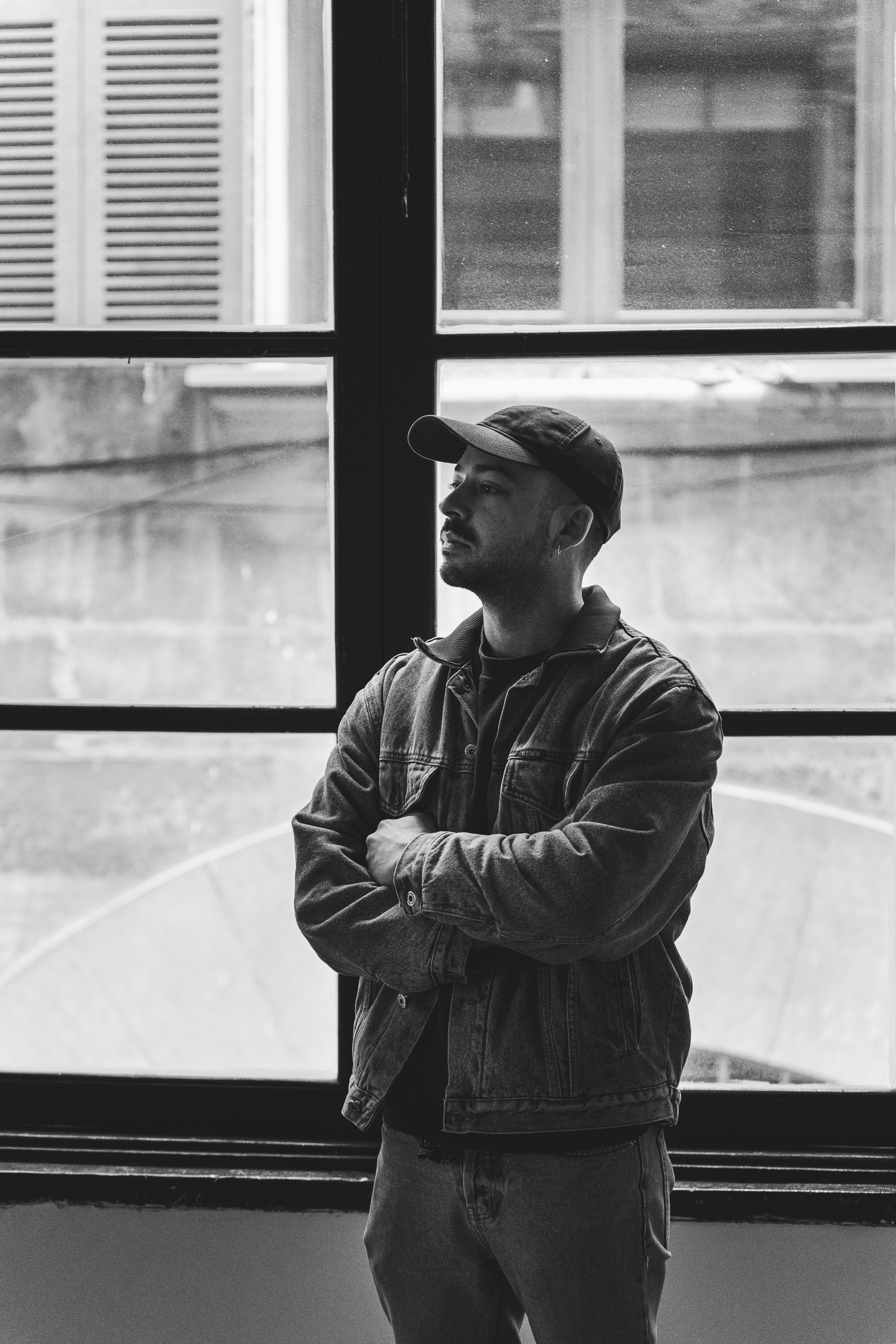
Portrait of Gori Mora, 2022. Courtesy of the artist and Galería Pelaires. Image by Grimalt de Blanch.
____
James Owens (Middlesbrough, 1995), Lives and works in London. His work gathers past, present and imagined scenes to form new narratives, which operate in moments of liminality. In these works, plants creep, dance and communicate in hushed tones. They grow in unlikely settings, pushing up through cracks and stretching towards the sun. This world captures nature in its full capacity - toying in flux between splendid growth and brutal death. As a small flower tenderly blossoms, another wilts. A curling tendril soon becomes a parasite. The paintings tread gently upon this balance between strength and weakness, hope and doom. Figures may come together with closeness, but there is a sense that they are protecting each other from something. Similarly, wildflowers appear in glorious full bloom - or perhaps they are fighting against one another for survival.
He received a BA in Illustration from Camberwell College of Arts. In 2018, Owens received the Evening Standard Art Prize in conjunction with his display at the National Gallery in London. Recent solo and group exhibitions include Wayward, Newchild Gallery, Antwerp (2025); Penumbra, Newchild Gallery at Frieze No.9 Cork Street, London (2025); The Silver Chord, Huxley Parlour, London (2024); Home and Away, Matt Carey Williams at Gallery2, Seoul (2024); Rooted, Berntson Bhattacharjee Gallery, London (2024); Out of Earth, The Approach Gallery, London (2024); Disembodied, Nicodim Gallery, L.A (2024); The Moth and the Thunderclap, Stuart Shave Modern Art, London (2023) and Dreaming of UFOs, Lychee One Gallery, London (2024).

Portrait of James Owens, 2025. Courtesy of the artist, image by Milly Cope.
____
Christian Quin Newel (Latisana, Friuli-Venezia Giulia, Italia, 1991), lives and works in London. Christian's paintings present ambiguous and unresolved dreamscapes, in which hybrid figures struggle between various stages of wisdom and enlightenment. Often possessing a dual nature, Newell's protagonists teeter between harmony and conflict, past and present, simultaneously enduring numerous identities and positionalities at once. Raised by a clairvoyant father and Roman Catholic mother, Newell, who is of mixed Jamaican and Italian heritage, is particularly attuned to the latent energies humming beneath our everyday surroundings. His painterly meditations are informed by Buddhist philosophy, mysticism and cosmology, and paranormal observations, recognizing the canvas as both a mirror onto his subconscious self as well as a portal into an otherworldly dimension.
Recent solo and duo exhibitions include The Light Burns The Reality, Sixi Museum, Nanjing (2025); TheWay, Public Gallery, London (2024); Siena, Various Small Fires, Los Angeles (2022); Earth Altar, Public Gallery, London (2021); and Apotheosis, WT Foundation, Kyiv (2021). His work has been exhibited in group exhibitions at Nova, Bangkok (2024); Marlborough Gallery, London (2023); Sargent's Daughters, New York (2023); Palazzo Monti, Brescia (2023); Public Gallery, London (2022); GRIMM Gallery, New York (2022); New York Studio School, New York (2021); ADZ Gallery, Lisbon (2021); CANADA, New York (2021); and The Drawing Center, New York (2020).
Newell has participated in residencies including Palazzo Monti, Brescia, Italy; The Fores Project, London, UK and the WT Foundation, Kyiv, Ukraine. His work is part of the permanent collections of the X Museum, Beijing, China and Recharge Foundation, New York, NY, USA.

Portrait of Christian Quin Newel, 2025. Courtesy of the artist and Public Gallery. Image by Sam Rowe.
____
Nastaran Shahbazi (Iran, 1982), lives and works in Paris. Memory and motion are important characteristics in her painting, drawing on her experience moving between Tehran, Paris, and Hong Kong before finally setting back in Paris. The characters featured in her work are often anonymous—born from sketches of physical locations and experiences—her final compositions reside in these personal places and cinematic scenes. Shahbazi's compositions offer the viewer several paths, leaving one free to create a personal and intimate relationship with the canvas and characters within. Recent exhibitions include her solo shows Wild Roses with The Hole (New York), To The Butterflies with Scroll (New York) and group show Rose Tinted Glasses curated by Saa Bogojev at Ojiri Gallery (London).
In Nastaran's work, sorrow stays similarly silent, pouring optimism into each painting and reworking compositions that start to show too much of life's sadness. She has painted away the sadness for us, inviting us to soak in a wistful beauty of being alive. With notes of Manet, Degas, Renoir, Matisse or Toulouse-Lautrec, Shahbazi conjures a half-remembered tune of 19th Century styles with modern and personal motives. She captures the poetic nuances of revelry, and from optimism comes freedom.
The figures are charming yet anonymous, the unseen strangers of the quotidian. They are not protagonists but the extras in the film, the dinner date at the table next to you. Her subjects come from her travels: living in Hong Kong and Paris, she depicts both personal and shared memories, holding an accessible intimacy that reflects the ways loved-ones disperse. With the Iranian diaspora spread so globally, the people she knows are everywhere.

Portrait of Nastaran Shahbazi, 2025. Courtesy of the artist.
____
Mònica Subidé (Barcelona, 1974), lives and works in Barcelona. Mònica creates dreamlike paintings on linen and paper that explore emotional space and the relationship between presence and absence. Through a palette of soft colors, unfinished lines, and a deliberately gestural approach, her compositions offer a visual experience that rejects strict logic to embrace an emotional space where anything is possible. Although her work remains grounded in figuration, it invites a deeper reflection on the intangible and the fleeting, playing with the idea of boundaries and the potential of space. Her work constructs an introspective atmosphere that invites the viewer to lose themselves in an imaginary expanse, where what is absent feels as significant as what is present.
Mònica studied at the Centre d'Art Massana in Barcelona. She has exhibited at Nino Mier Gallery in Brussels; Yiri Arts in Taipei; Soy Capitán Gallery in Berlin, Germany; Galerie Max Hetzler in Berlin, Germany; Galería Herrero de Tejada in Madrid, Spain; and Galería Ehrhardt Flórez in Madrid, Spain. This marks Mònica Subidé's second collaboration with Galería Pelaires, following her solo exhibition Un espai per a l'absència at Pelaires Cabinet, also curated by Saa Bogojev.
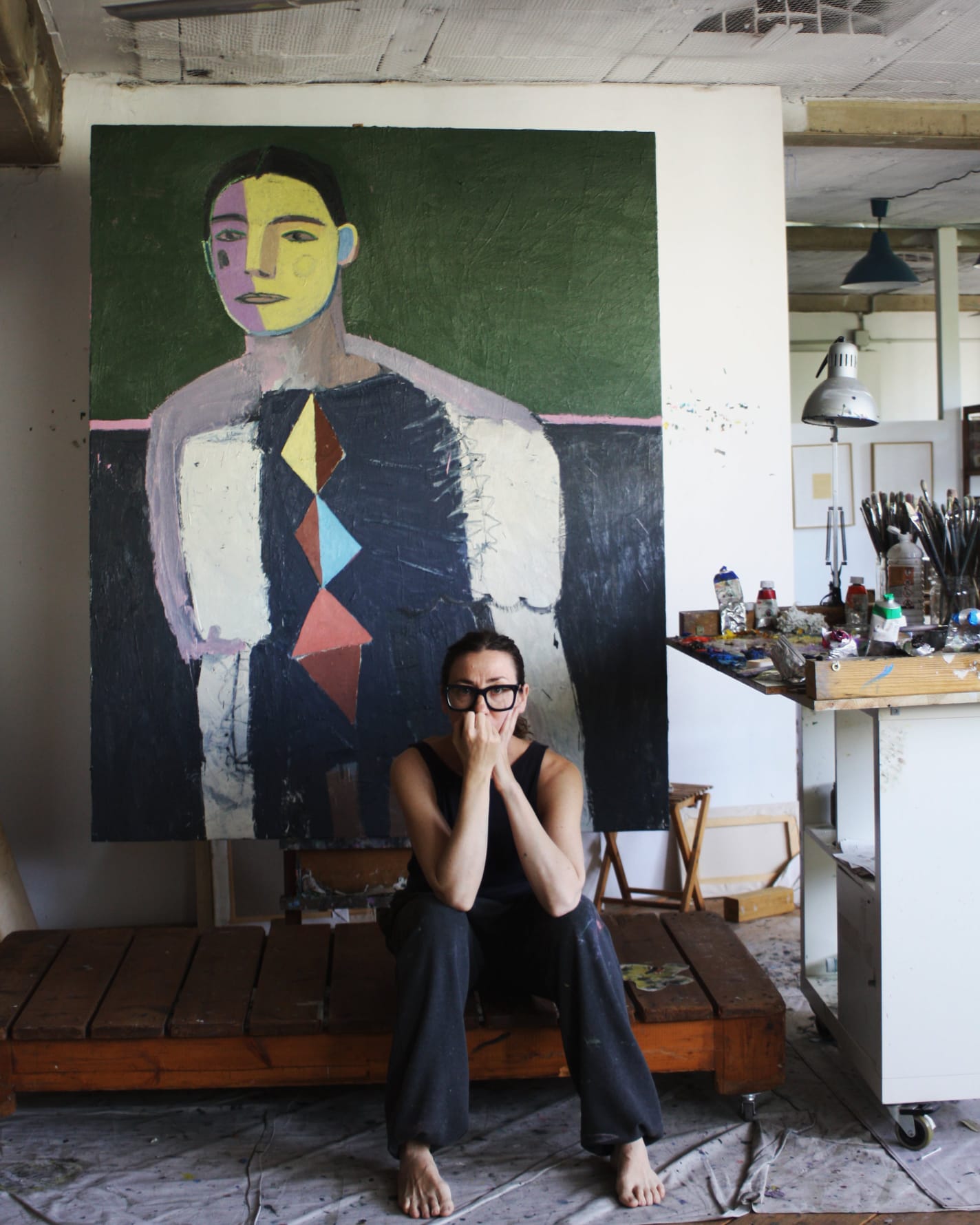
Portrait of Mònica Subidé, 2024. Courtesy of the artist.
____
Jonathan Wateridge (Lusaka, Zambia, 1972), lives and works in Norfolk.Often depicting domestic scenes both interior and exterior, Jonathan Wateridge's canvases evoke a duality of familiarity and strangeness. In recent years, Wateridge has reinvented his visual language, presenting a distinctive vision that combines high-modern formalism with echoes of the cinematic. In contrast to the modelled realism of his earlier works, his current ghost-like figures are charged with feelings of isolation and uncertainty. These atomized and translucent beings are seamlessly interrupted by or absorbed into their environments, inviting contemplation on the social relationship between these figures and the insecurity of their world.
His work is the subject of two comprehensive monographs Uncertain Swimmer (2023) and Enclave / Expatria (2019) published by Anomie.
Selected collections include Aïshti Foundation, Jal el Dib (LB); AkzoNobel Art Foundation, Amsterdam (NL); Didier Casimiro, Kiev (UA); Loed Evans, London (UK); Mollie Dent Brocklehurst, London (UK); Pinault Collection, Paris (FR) and Venice (IT); Rennie Collection, Vancouver (CA); Saatchi Collection, London (UK); Simmons & Simmons, London (UK); Zabludowicz Collection, London (UK).

Portrait of Jonathan Wateridge, 2024. Courtesy of the artist and GRIMM Amsterdam / London / New York.
____
Matthias Weischer (Elte, 1973), lives and works in Leipzig. Matthias's paintings depict domestic interior scenes and landscapes that challenge the viewer's perception of space. One of the foremost painters of his generation, Weischer has refined his technique by repeatedly crafting and restaging compositions, often drawing from his own studio as a point of departure. He gradually builds thick layers of pigment on the canvas, creating surfaces alive with rich texture. This approach allows for a striking interplay between intricate detail and elusive space. In his recent work, Weischer constructs enigmatic interiors that suggest a fleeting human presence. Each room captures a moment suspended in time; the sparse furniture and signs of disrepair evoke a sense of abandonment. The uncanny atmosphere is heightened by the recurring presence of paintings within the depicted spaces, resulting in a disorienting layering of dimensions.
Matthias Weischer (b.1973 in Elte, DE) lives and works in Leipzig (DE). He studied at the Leipzig Academy, where he received his Bachelor's degree in 2000 and his Master's degree in 2003. In 2004, Weischer was chosen as the protégé of the British artist David Hockney through the Rolex Mentor & Protégé Arts Initiative. In 2005 Weischer participated in the Prague Biennial 2 (CZ) and the 51st Venice Biennial (IT).
Recent exhibitions include How To Look At..., HALLE 14, Leipzig (DE), 2025; 10 Years G2 Kunsthalle, G2 Kunsthalle, Leipzig (DE), 2025; OUR HOUSE, Museum Giersch of the Goethe, University, Frankfurt am Main (DE), 2024; Matthias Weischer, with Wolfram Ebersbach, Marburger Kunstverein, Marburg (DE), 2024; Arcadia, Kewenig Gallery, Berlin (DE), 2024; Licked by the Waves | New Bathers in Art, Museum MORE, Gorssel (NL), 2024; True Colors, AkzoNobel Art Foundation at the Kunstmuseum den Haag (NL), 2024; Sequence, GRIMM, New York, NY (US), 2023; STANZE, Fondazione Coppola, Vicenza (IT), 2023; and Wo Man Sich Trifft / Where We Meet, curated by Juriaan Benschop, Emsdettener Kunstverein (DE), 2023.
Selected collections include AkzoNobel Art Foundation, Amsterdam (NL); AmC Collezione Coppola, Vicenza (IT); Arken Museum of Modern Art, Arken (DK); Drents Museum, Assen (NL); Essl Museum Kunst der Gegenwart, Klosterneuburg (AT); Fundació Sorigué, Lleida (ES); G2 Kunsthalle, Leipzig (DE); Kunstmuseum, The Hague (NL); MdbK | Museum der bildenden Künste, Leipzig (DE); Museum of Contemporary Art, Los Angeles, CA (US); Museum für Moderne Kunst (MMK), Frankfurt am Main (DE); Pinault Collection, Paris (FR); Rubell Museum, Miami, FL and Washington DC (US); Sammlung Goetz, München (DE); Scharpff Collection, Bonn (DE); SØR Rusche Sammlung Oelde/Berlin, Oelde-Stromberg (DE); Telegraph Foundation, Olomouc (CZ); Museum Voorlinden, Wassenaar (NL); Weserburg | Museum für moderne Kunst, Bremen (DE) and Zabludowicz Collection, London (UK).
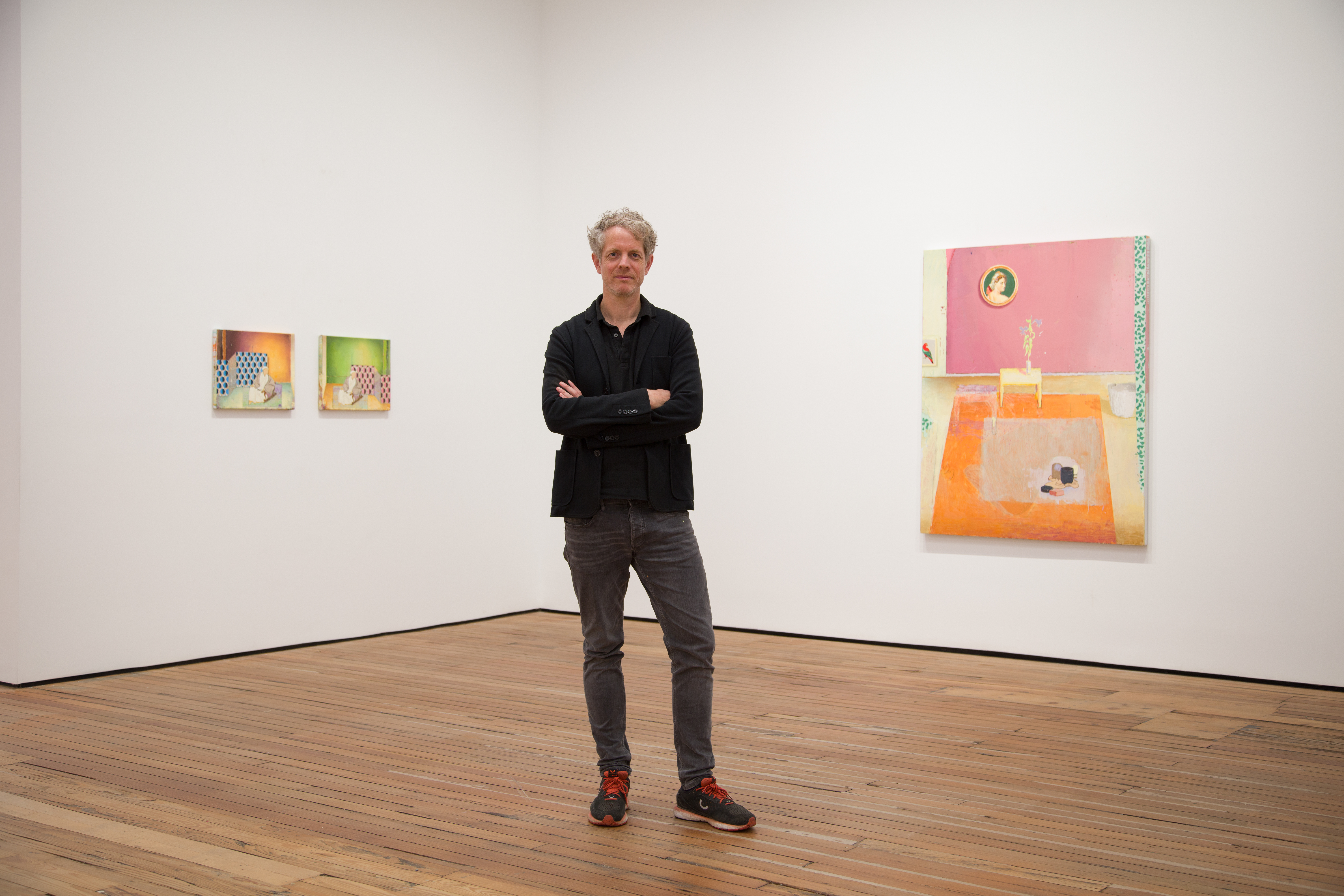
Portrait of Matthias Weischer, 2023. Courtesy of the artist and GRIMM Amsterdam / London / New York.
La Galeria Pelaires ha rebut una subvenció del Consell de Mallorca i de l'ICIB per a la realització d'aquesta exposició.

